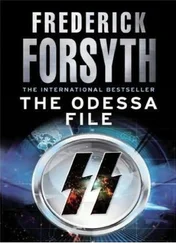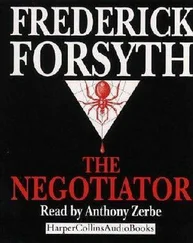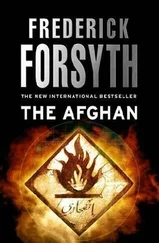What the Tracker could surmise was that the fanatical and eager-to-rise Zulfiqar Ali Shah, now calling himself Abu Azzam, was among them.
What he could not know was that Abu Azzam, while avoiding going into mortal danger in raids into Afghanistan, developed a taste for killing and became the 313 Brigade’s most enthusiastic executioner.
One by one, the leading figures of Haqqani, Taliban, al-Qaeda and the Brigade were identified by the Americans, located with local information and targeted for drone strikes. In those mountain fastnesses, they were immune to army attack, as Pakistan discovered with huge losses, but could not hide for long from the UAVs, endlessly patrolling over their heads, soundless, invisible, watching everything, photographing everything and listening to everything.
The HVTs, the high-value targets, were blown to pieces, replaced by others, who were, in turn, blown away, until leadership became virtually a sentence of death.
But the old links with S Wing of Pakistan’s ISI never died. The ISI had created the Taliban in the first place and never lost sight of a single prediction: The Yankees have the clocks, but the Afghans have the time. One day, they calculated, the Americans will pack up and go. The Taliban might well retake Afghanistan, and Pakistan does not want two enemies, India and Afghanistan, on her borders. One will be enough, and that will be India.
There was one more chapter in the mass of data that the Tracker had unleashed. The 313 Brigade, with its leaders, including Kashmiri, blasted into infinity, ebbed away but was replaced by the even more fanatic and sadistic Khorosan, and Abu Azzam was at the heart of it.
Khorosan was no more than two hundred and fifty ultras, mostly Arabs and Uzbeks, targeted at the local natives who were selling information to U.S.-paid agents, particularly the whereabouts of the top targets. Khorosan had no talent for gathering its own intelligence, but a limitless capacity to terrify by public torture.
Whenever a drone-launched missile wiped out a house containing a terror leader, the Khorosan would arrive to snatch a sample of local citizens and inflict so-called courts, preceded by extreme interrogation involving electric shocks, electric drills or red-hot irons. The court would be presided over by an imam or mullah, often self-styled. Confessions were almost guaranteed and sentences other than death exceptional.
The habitual method of death was throat cutting. The merciful procedure involves the knife penetrating from the side, razor edge forward. A quick slice outward will open the jugular vein, carotid artery, trachea and esophagus, bringing instant death.
But a goat is not killed that way because maximum blood loss is needed to tenderize the meat. Then the throat is opened by a hacking, seesawing motion from the front. To make a human prisoner suffer and to demonstrate contempt, the goat method is used.
Having passed sentence, the presiding priest would then sit and watch it carried out. One of them was Abu Azzam.
There was one more item in the file. About 2009, a roaming preacher began to sermonize in the mosques along the peaks of North and South Waziristan. The CTC file gave him no name, saying only that he spoke Urdu, Arabic and Pashto and was a most powerful orator who could bring his audiences to extremes of religious exultation. Then, about 2010, he vanished. He had never been heard of in Pakistan since.
* * *
The two men sitting in the corner of the bar of the Washington Mandarin Oriental attracted no attention. There was no reason why they should. Both were early to mid-forties, both in dark suits with white shirt and neutral tie. Both looked lean and hard, slightly military, with that indefinable air that says “Been in combat.”
One was the Tracker. The other had introduced himself as Simon Jordan. He did not like to meet with complete strangers inside the embassy if it could just as well be done outside. Hence the meeting in the discreet bar.
Back in his home country, his first name was really Shimon, and his surname had nothing to do with any river. He was the head of station of the Mossad in the Israeli embassy.
The Tracker’s request was the same as he had placed with Konrad Armitage and the result was much the same. Simon Jordan also knew perfectly well who the Tracker was, what TOSA really did and, as an Israeli, thoroughly approved of both. But he did not have any answer at his fingertips.
“Of course, there is someone back home at the Office who will cover that part of the world, but I will have to put the question to him. You are, I suppose, in a hurry?”
“I’m an American. Are we ever anything else?”
Jordan laughed with genuine appreciation. He liked self-deprecation. Very Israeli.
“I’ll ask at once and request no delay.” He held up the card in the name of Jackson that the Tracker had given him. “I suppose this is a secure number?”
“Very.”
“Then I’ll use it. And on one of our secure lines.”
He knew perfectly well that the Americans would listen to anything coming out of the Israeli embassy, but allies try to maintain the courtesies.
They parted. The Israeli had a car waiting, with a driver at the wheel. It would take him to the door. He did not like to be ostentatious, but he was “declared,” which meant he might be recognized. Driving himself or taking a cab was not a wise way of avoiding a kidnap. Having a former Golani Brigade commando at the wheel and an Uzi in the back was better. On the other hand, he did not, like an “undeclared,” have to go through a lot of rigmarole involving double-backs and side entrances.
The Tracker, among his other habits that raised official eyebrows, did not like a chauffeur-driven car if he could avoid it. Nor did he like to spend hours in the gridlocks between downtown D.C. and his office in the forest. He used a motorcycle, with helmet and visor in a pannier under the seat. But it was not a rolling armchair; it was a Honda Fireblade, a transport with which there is not much point in arguing.
* * *
Having read the file from Javad, the Tracker was convinced, though he could not know it rightly, that Abu Azzam had fled the too-dangerous mountains of the Afghan/Pak border for what seemed the safer climes of the Yemen.
In 2008, al-Qaeda in the Arabian Peninsula, AQAP, was in its infancy, but among its leaders was an American-raised Yemeni called Anwar al-Awlaki, fluent in English with an American accent. He was establishing himself as a brilliantly effective online sermonizer, reaching out to the teeming diaspora youth of Britain and the U.S. He also became the mentor of the newly arrived, also English-speaking Pakistani.
Awlaki had been born of Yemeni parents in New Mexico, where his father was studying agriculture. Raised virtually as an American boy, Awlaki was first brought to Yemen, age seven, in 1978. He completed secondary education there, then returned to the U.S. for college in Colorado and San Diego. In 1993, age twenty-two, he went to Afghanistan, and it seems it was there that he converted to ultra-violent Jihadism.
Like most Jihadi terrorists, he had no Koranic scholarship at all, confining himself to extremist propaganda. But back in the States, he managed to become resident imam at the Rabat Mosque in San Diego, and at another in Falls Church, Virginia. On the threshold of arrest for passport fraud, he quit for Britain.
Here he traveled widely on speaking tours. Then came 9/11, and the West woke up at last. The net tightened, and in 2004 he left Britian and returned to Yemen. He was briefly arrested and imprisoned on kidnap and terrorism charges but was released after pressure from his influential tribe. By 2008, he had discovered his true slot — as a firebrand sermonizer, using the Internet as his pulpit.
Читать дальше










